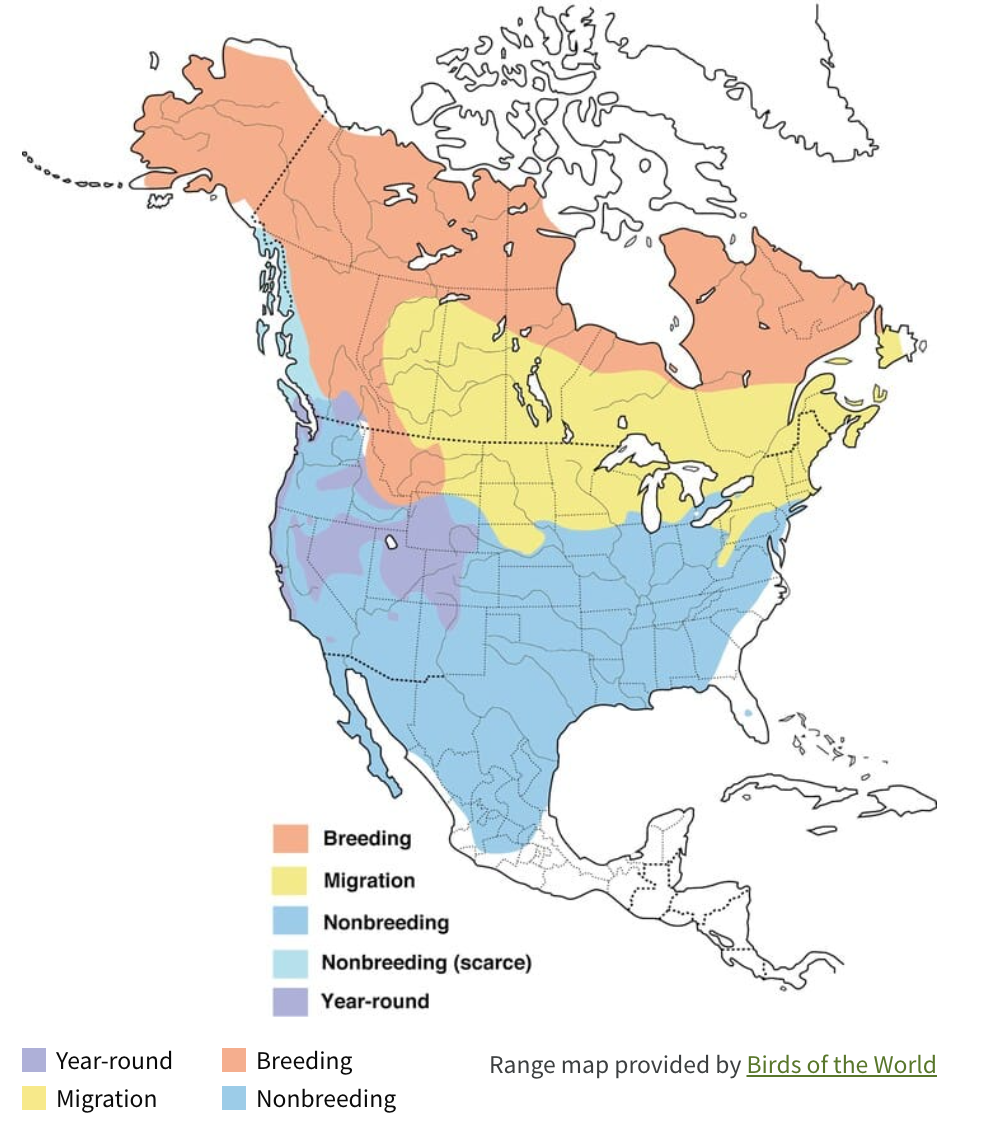The beginning of fall migration was uncharacteristically quiet this year at Goose Pond. With little water in the pond, the flocks of geese, swans, and ducks sought deeper waters to refuel in during their migration. Without all the commotion on the pond, I was able to refocus my ears to the softer, more delicate songs of returning sparrows. At the beginning of October, the high-pitched trills of White-crowned and White-throated sparrows returned to the shrubby edges around the buildings, food plot, and trails at Goose Pond—songs not heard since May according to eBird reports.
Adult White-crowned Sparrow (photo by Mick Thompson).
The other day, I was asked how I could tell the difference between the calls of White-throated Sparrows and White-crowned Sparrows. The first explanation was easy: White-throated Sparrows have the catchy mnemonic “Oh-sweet-Canada-Canada” to remember their call. White-crowned sparrows on the other hand left me stumped—the first response I could come up with is, they just sound like White-crowned Sparrows.
As it turns out, my inability to concisely describe their song was warranted, as the songs of White-crowned Sparrows are some of the most studied sounds in animal behavior. Although they can still be recognized by their high pitched succession of whistles, trills, and buzzes, subspecies across the country sing distinctly different songs in unique dialects. The males sing much more than the females, who will occasionally sing a quieter and more variable song to defend a food source or breeding territory. That being said, the males are the subject of most of the research done on their unique songs.
Juvenile White-crowned Sparrow (photo by Mick Thompson).
In the first two to three months of their lives, young male White-crowned Sparrows will learn the majority of the song they will sing into adulthood. Since they do not learn the songs directly from their parents, the song will be the product of the birds’ local soundscape in its natal neighborhood. This environmental learning mechanism, coupled with the fact that they usually breed near where they were raised, results in local dialects. To make matters more interesting (and perhaps confusing), males raised on the edge of two dialects may be capable of singing both dialects!
Despite their difficult-to-describe song, White-crowned Sparrows are one of easier sparrows to identify by sight. As their name suggests, these sparrows sport crisp white stripes on the crowns of their heads. While adults have clearly defined black and white stripes on their heads, juveniles have less defined brown and tan stripes in the same pattern. They are larger sparrows whose underparts are a streakless wash of gray that fades to brown towards their sides. Although their bill color varies from pink to yellow, they are distinctly bright compared to that of White-throated Sparrows.
White-crowned Sparrow range map (via Birds of the World).
Throughout most of Wisconsin, we only get to see White-crowned Sparrows during migration as they head to their wintering grounds throughout most of the central United States or to their arctic breeding territory. However, White-crowned Sparrows will occasionally winter in southeastern Wisconsin. Last year we were lucky enough to have a few reside at Goose Pond through the winter. As the days get shorter and colder, I look forward to seeing, and hearing, if any of these talented singers decide to stay with us again.
Written by Emma Raasch, Goose Pond Sanctuary Ecological Restoration Technician
Cover image by Andy Reago & Chrissy McClarren. An adult White-crowned Sparrow with a peachy bill, buffy gray body plumage on the body, and crisp white and black plumage on the head perches on seeds in a corn field.







